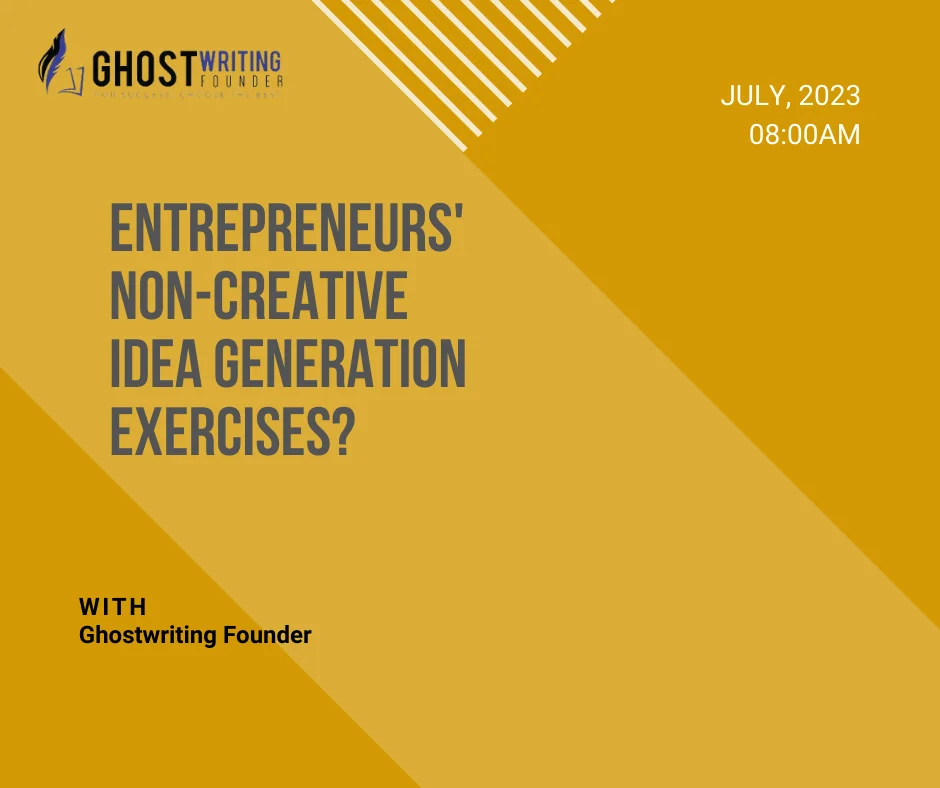
Business Writing
Entrepreneurs often have to come up with new and different ideas to stay at the top of their industries. People often use creative thinking exercises, but non-creative thinking exercises can also help people develop new ideas. These exercises help entrepreneurs break out of old ways of thinking and find new ways of looking at things that can lead to new answers.
Understanding Non-Creative Thinking
Non-creative thinking is about trying different ways of thinking beyond ideas. These activities help businesses look at problems and opportunities from different points of view and test the assumptions they have made. By doing tasks that don’t require creative thinking, entrepreneurs can develop a mindset open to unusual ideas and help them find new ways to explore.
Exercise 1: Reverse Thinking
Flipping the problem or idea on its head is a powerful reverse-thinking method. Instead of trying to find answers, businesses look at things from the other side. By asking questions like “What if the problem doesn’t exist?” or “How can we make this idea fail?” they gain important insights and find other ways to do things.
Exercise 2: Analogical Thinking
When you think analogously, you make links between things that don’t seem to go together. Entrepreneurs look for ways to apply answers from other fields to their problems. This Non-creative Thinking activity pushes them to think outside the box and develop new ideas using information from different fields.
Exercise 3: Questioning Assumptions
Questioning beliefs is a key part of thinking that is not creative. Entrepreneurs question the claims that are made about their problem or idea. They can find hidden chances and develop new ways to do things by questioning accepted norms and ideas.
Exercise 4: Mind Mapping
Mind mapping allows entrepreneurs to organize their thoughts and look for links between them. Entrepreneurs can spark their imagination and develop new ideas by making a picture of a problem or idea. Mind maps let you explore ideas in a non-linear way, which helps businesses think more broadly.
Exercise 5: Forced Connections
In a forced connections practice, you combine things or ideas that don’t go together to develop new ideas. Entrepreneurs put together things or ideas that don’t go together on purpose and see what happens. This activity gets them to think outside the box and find new ways to put things together that could lead to new answers.
See Also
10 Best Comic Book Writers of All Time
Exercise 6: Random Word Association
Random word association is an easy way to help people develop new ideas. Entrepreneurs pick words randomly and try to find ways to link them to their problem or idea. By forcing their brains to make connections they wouldn’t normally make, they can develop new ideas and try different ways of doing things.
Exercise 7: Six Thinking Hats
Edward de Bono developed the Six Thinking Hats practice, which involves putting on different “hats” to represent different ways of thinking. Each hat represents a different way of solving a problem, such as thinking logically, emotionally, or creatively. By consciously using different ways of thinking, entrepreneurs can look at a problem or idea from many different points of view and come up with many different answers.
Exercise 8: Role Reversal
Entrepreneurs have to put themselves in the place of someone else, like a customer or a rival, during a role reversal exercise. Businesses can learn and better grasp new things by looking at a problem or idea differently. This practice helps entrepreneurs break out of their usual ways of thinking and gets them to think more empathetically.
Exercise 9: SCAMPER Technique
The SCAMPER method is a great way to come up with new ideas. It includes asking questions about each letter of the acronym SCAMPER. By asking these questions in a planned way, businesses can come up with many ideas and find new ways to solve problems. Ghostwriting Company can assist you in applying the scamper technique.
Exercise 10: Concept Fan
Exploring the different sides of a core idea is part of the concept fan activity. Entrepreneurs start with a main idea and develop ideas for different parts, like features, target audiences, or marketing strategies. This activity helps businesses think more deeply about their ideas and find opportunities they might not have seen before.
Exercise 11: Storyboarding
Storyboarding is a visual design thinking practice that is often used. Entrepreneurs make a series of drawings or pictures that show the problem or idea. By picturing the idea, entrepreneurs can find gaps, try out different situations, and develop new ways to solve problems.
See Also
Twisted Series Order (Ultimate Guide)
Exercise 12: Worst Possible Idea
The worst idea for entrepreneurs is to come up with the worst ideas they can think of about their problem or idea. By looking at the extremes, businesses can find out what works and what doesn’t. This practice can help entrepreneurs think of new and useful ideas by getting them to think creatively.
Exercise 13: Visual Thinking
Visual thinking uses pictures, diagrams, or charts to help you understand a problem or idea. Entrepreneurs can improve their thinking by drawing ideas, making flowcharts, or using other visual tools. Entrepreneurs can use both sides of their brains when they think visually, leading to new ideas.
Exercise 14: Provocative Statements
In the “Provocative Statements” practice, you make bold and controversial statements about the problem or idea. By questioning the status quo and accepting provocative thinking, entrepreneurs can change people’s thinking and find new ways to solve problems. This activity gets them to think outside their comfort zones and go to places they haven’t been before.
Exercise 15: Future Projection
In a future prediction, Non-creative Thinking exercise, you try to imagine what will happen and how the problem or idea might change over time. Entrepreneurs consider how trends, tools, and societal changes might affect their field. Businesses can plan for problems and find innovative opportunities by looking into the future.
Main Attributes and Elaborate Information
| Exercise | Description | Benefits for Entrepreneurs |
|---|---|---|
| Reverse Thinking | Involves looking at problems or ideas from the opposite perspective, like imagining the absence of a problem or how an idea might fail. | Encourages out-of-the-box thinking and challenges existing assumptions. |
| Analogical Thinking | Drawing parallels and applying solutions from unrelated fields to current problems or ideas. | Fosters innovative solutions by bridging diverse concepts. |
| Mind Mapping | Organizing thoughts visually to explore connections and relationships between various aspects of a problem or idea. | Aids in structuring thoughts and uncovering hidden opportunities. |
| Forced Connections | Deliberately combining unrelated elements to generate new ideas. | Stimulates creativity by exploring unconventional combinations. |
| Six Thinking Hats | Adopting different perspectives (logical, emotional, creative, etc.) to examine problems or ideas. | Promotes comprehensive analysis and diverse viewpoints. |
| Storyboarding | Visualizing problems or ideas through a series of drawings or images. | Helps in identifying gaps and exploring various scenarios. |
| Future Projection | Imagining future scenarios and how current problems or ideas might evolve. | Assists in anticipating future trends and preparing innovative strategies. |
Conclusion
To succeed as a business, you need to develop new ideas. People often use creative thinking exercises, but non-creative thinking exercises are another way to develop ideas. Entrepreneurs can break out of standard thinking and find new ways to solve problems using reverse thinking, analogical thinking, and questioning assumptions.









Leave a Reply